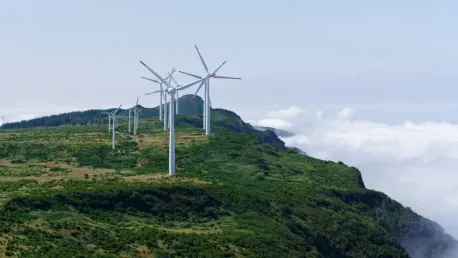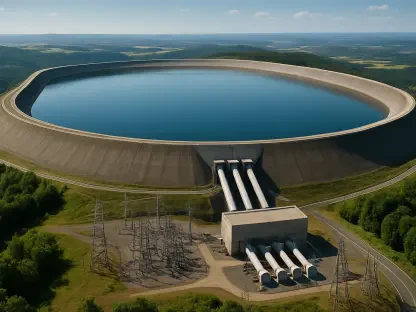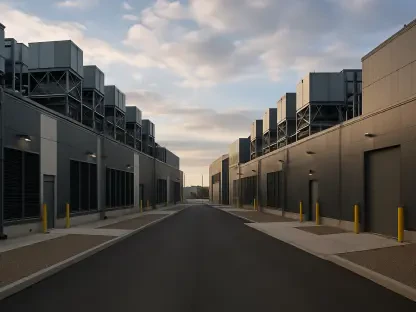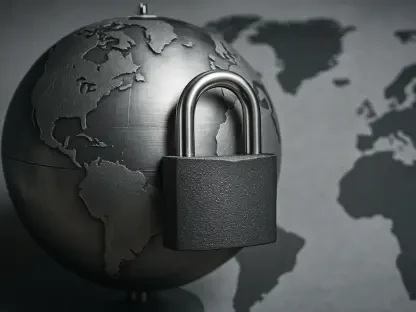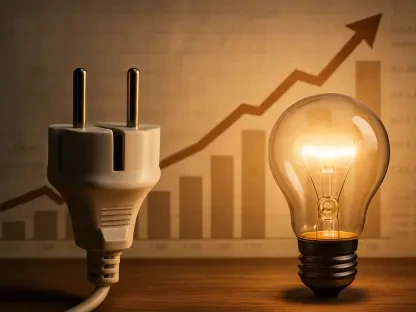Frequent extreme weather, record-breaking power outages, and high energy costs have galvanized Puerto Rico’s determination to create a more resilient, reliable, and affordable energy system.
In 2017, the island faced a devastating crisis when hurricanes destroyed roughly 80% of its electric grid, resulting in the longest blackout in U.S. history—328 days—and the loss of over 3,000 lives.
Determined to rebuild differently, Puerto Rico passed Act 17 in 2019, committing to achieve 100% renewable energy by 2050. With billions in funding now available, the challenge lies in aligning investments with the island’s values and priorities.
The Puerto Rico Grid Resilience and Transitions to 100% Renewable Energy Study (PR100), a two-year effort led by the U.S. Department of Energy’s (DOE) Grid Deployment Office and funded by FEMA, integrates advanced models and analyses. The study harnesses expertise from six DOE national laboratories, spearheaded by the National Renewable Energy Laboratory, to guide Puerto Rico’s renewable energy transition.
This article explores how the island plans to transition to clean energy in the coming years.
Consultative Process Drives PR100 Focus
Recognizing the importance of aligning their research with Puerto Rico’s priorities, the team collaborated closely with the Hispanic Federation in Puerto Rico. This partnership helped shape the stakeholder engagement strategy, which included the PR100 Community Engagement Tour.
The tour involved visits to various communities across the island, from Mayagüez to Vieques, and featured discussions with diverse groups such as local businesses, the agricultural sector, individuals with disabilities, workforce experts, and philanthropic organizations.
“These sessions were intentionally designed to be accessible to as many people as possible, which meant traveling across Puerto Rico, providing English and Spanish interpretation, and hosting some sessions online,” explained Robin Burton from the National Renewable Energy Lab (NREL).
Alongside the community engagement tour, the PR100 team formed an advisory group to ensure a wide range of perspectives was included. They also created a steering committee to guide the study by shaping the scenarios, supplying relevant data, and offering feedback throughout the project.
“No one can say ‘I did not know about [PR100]’ or ‘I was not a part of it’,” stated Eduardo Bhatia, a former Puerto Rico senator who formed part of the advisory group. “Anyone who wanted to be part of it was a part of it.”
The research team spent approximately 6 months, alongside the advisory group, defining relevant scenarios to use as a framework for the stakeholder priorities. This step is essential in drafting national policies that will impact the population.
When transitioning to a clean economy, various factors have to be considered to make it a just and socially responsible campaign. Citizens have a number of fears which the consultative process can help allay and find solutions towards. The loss of jobs from sunset industries in the oil and gas sector, the high cost of renewable energy may lead to energy insecurity for millions of people and the reliability of these sources in a country that experiences extreme weather events.
Coming out of the consultation process, these are the factors that have been addressed:
Energy access and affordability
Reliability and resilience (under both normal and extreme weather conditions)
Siting, land use, environmental and health effects
Economic and workforce development
The NREL, in conjunction with several national labs, have been able to incorporate these factors into a model that demonstrates how the country will transition to a clean energy economy.
“We needed to know what changes to the transmission and distribution grid infrastructure would be needed to achieve 100% renewable energy, with significant adoption of residential rooftop solar paired with battery energy storage,” said NREL’s Murali Baggu, the study’s co-principal investigator.
“So, we explored a mix of solar photovoltaics, battery energy storage, wind energy, other renewable generation and infrastructure evolution options—both at the grid scale and for individual buildings—that is most achievable, cost-effective, and resilient against disruptions.”
Solar Leads the Way to a Sustainable Future and Secure Grid
Extreme weather events have devastated Puerto Rico’s grid infrastructure. The frequency and intensity of the storms they experience require a new solution to be developed. One that prioritizes sustainability and energy security.
According to scientists at Stony Brook University (School of Marine and Atmospheric Sciences) greenhouse gas emissions caused an increase in global surface temperatures of more than one degree Celsius. This has had a direct impact on hurricane severity, which explains the situation Puerto Rico finds itself in today.
As weather events become more extreme, power outages will become more frequent. This is why solar is touted as the best solution for a stable grid. Solar panels are designed to withstand storms and gale-force winds. One of the clearest examples is a hospital in San Juan that remained operational by relying on solar power. Others, however, were not so resilient.
Already plagued by frequent blackouts and power outages, Puerto Rico is in desperate need of a pivot and is a perfect candidate for solar energy.
The PR100 study has already found that the island has the potential to produce more solar energy that it would need to run efficiently, with plenty of sunshine and long days. Not only is solar feasible, but it would provide much needed grid stability; weathering storms and extreme events.
Critics Argue the Validity of the Economic Claims
While the feasibility study has taken great lengths to push Puerto Rico’s clean energy agenda to the fore, many are critical of the economic claims being made. According to Washington-based thinktank, The Heritage Foundation, the economic viability of clean energy has not been well thought out. Let’s take a brief look at the economic concerns they’ve outlined:
They argue that the proposal underestimates the resilience required for renewable infrastructure against the severe hurricanes that regularly devastate Puerto Rico. They claim the resiliency analysis does not fully address the considerable costs of reinforcing and repairing vulnerable wind turbines and solar panels.
Additionally, the Heritage Foundation points out that the costs of overhauling Puerto Rico’s aged transmission system isn’t accurately accounted for. Rather, it notes that renewable penetration that exceeds 40% could cause serious strain on existing infrastructure, which would lead to blackouts.
The transition to 100% renewable energy requires a complete overhaul of the power grid. The Heritage Foundation points out that solar energy, at the level required to sustain the island, would necessitate the installation of expensive grid-forming inverters and controllable capacitators. This represents an additional unaccounted cost.
To achieve stability on renewable energy sources, various studies propose a reliance on battery-storage solutions. The Foundation points out that with Puerto Rico’s high frequency of extreme weather events, battery systems would be at risk of flooding. To mitigate this, careful siting and hardening is required. Taking a longer-term view, performance, degradation, and battery replacement costs would increase utility costs.
The PR100 study finds that Puerto Rico will have the potential to generate more solar energy than required, which leaves the system with a surplus. While this is a positive, the report doesn’t address the lack of infrastructure for a two-way flow; i.e. while the idea of customers returning surplus energy sounds like a great strategy, there is little to support this in reality. There are numerous financial, technical, and safety challenges associated with bringing this idea to life.
According to the PR100 report, utility revenue may need to increase by 53% to support the development of a renewable grid, and energy tariffs are projected to increase by up to 75% between the period of 2020 to 2025. This constitutes an enormous price increase that may be unattainable for a majority of citizens.
Close to half of Puerto Rico’s population live below the poverty line, which further underscore the issue of rising electricity costs in the transition window. The report makes mention of the fact that “low-income households… were particularly vulnerable to large retail rate increases.” This would exceed the highest prices of electricity compared to the US and could exacerbate inequity and inequality in Puerto Rico.
Lastly, the Heritage Foundation points out that price increases would put a damper on commercial activities and indirectly raise unemployment rates.
The Energy Department is attempting to eliminate fossil fuel use in Puerto Rico, but residents want greater industrial development and more reliable, cheaper fuels. Energy availability creates jobs and a pathway to more productive economic growth. That’s what Puerto Rico needs.
Concluding Thoughts
Puerto Rico’s energy challenges, highlighted by the devastation of its grid during 2017’s hurricanes, have inspired a bold vision: Achieving 100% renewable energy by 2050. The PR100 study, led by the U.S. Department of Energy and supported by six national laboratories, offers a roadmap to this goal. It incorporates extensive community input, focusing on affordability, resilience, environmental impact, and economic development.
The study outlines three scenarios for transitioning to renewable energy, centered on varying levels of distributed solar and storage adoption. Scenario 1 emphasizes economic feasibility, Scenario 2 prioritizes equity for low-income and remote communities, and Scenario 3 maximizes rooftop solar deployment. Each scenario considers land-use constraints and future energy demand uncertainties, resulting in 12 tailored pathways.
The findings confirm that a renewable future is technically achievable but requires significant investments in infrastructure upgrades, grid reliability, and operational enhancements. These changes promise safer, more resilient energy systems that align with Puerto Rico’s land-use priorities and socio-economic goals.
By integrating local voices and showcasing renewable energy potential, Puerto Rico’s approach could serve as a model for other regions facing energy and climate challenges.
